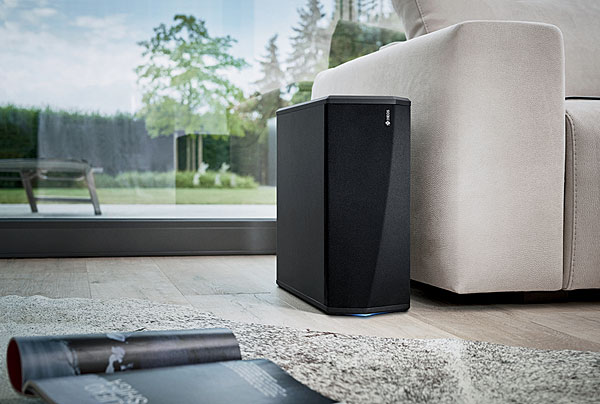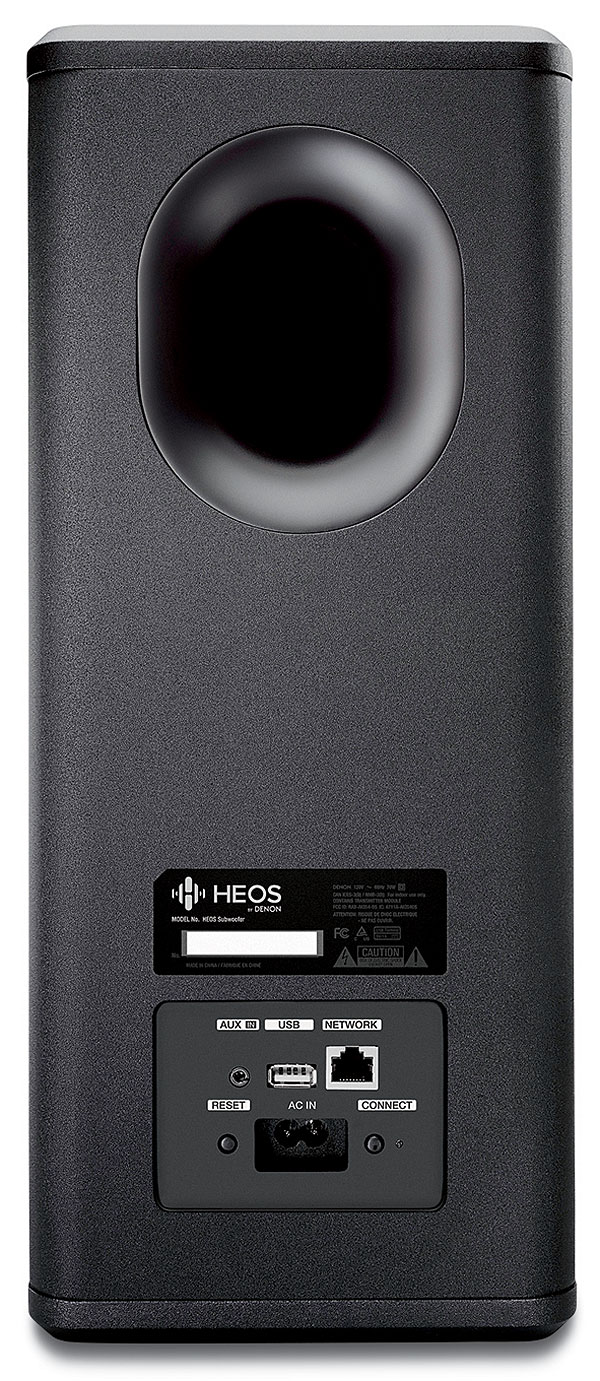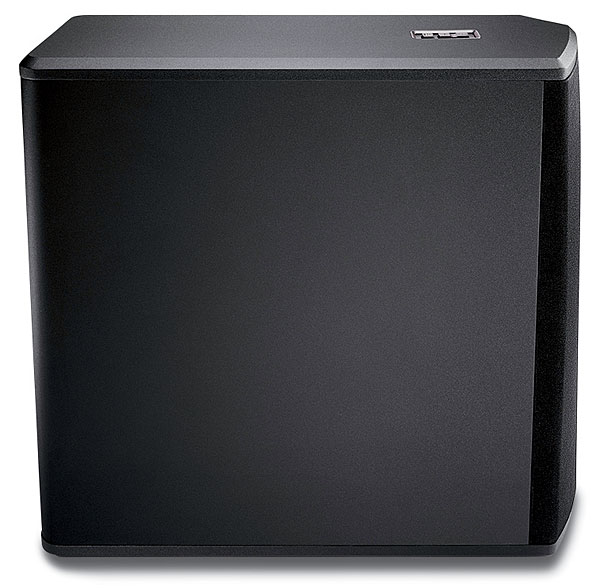Denon HEOS AVR A/V Receiver Review HEOS Subwoofer

Denon’s HEOS Subwoofer stays true to the HEOS ethos both cosmetically and functionally. This is a sub without a wired analog input, connecting exclusively through the network, either Ethernet or Wi-Fi. It can be used to add bass support to any HEOS wireless speakers, including the HEOS Bar soundbar, and can be used with the HEOS Amp and Link modules as well as with the HEOS AVR.
The sub is the size and shape of a desktop PC and can be placed vertically or horizontally. Behind a fabric-covered grille is a pair of 5.25-inch drivers; there’s also a port on the cabinet’s back panel. Aside from the HEOS-style volume and mute buttons on top, the LED stripe at bottom, and the necessary connect and reset buttons on back, it takes its crossover and system-volume settings from the HEOS App. It doesn’t have a line or LFE input—just Ethernet and the setup-related aux jack. It does have a USB jack, and it’s not just for manual firmware updates. As with other HEOS speakers, it also feeds the entire HEOS ecosystem (not just the sub) with music from a USB drive.

I auditioned the HEOS Subwoofer along with the HEOS AVR. I also created a special drumcentric playlist to compare it with my reference sub, the Paradigm Seismic 110. The tracks were Led Zeppelin’s “Moby Dick” from Led Zeppelin II, a vehicle for John Bonham’s drum solo; The Who’s medley of “My Generation” and various Tommy excerpts on Live at Leeds, with Keith Moon in his prime; the Dave Brubeck Quartet’s “Take Five” from Time Out, with Joe Morello’s memorable solo; and (you guessed it) the Beatles’ “The End” from Abbey Road, with Ringo Starr’s perfect blend of taste and power. Zep and Brubeck were FLAC 96/24 files, while the others were ALAC ripped from CD. The HEOS AVR accessed the playlist on the PC through the network.
Let me state up front that it was never a fair fight. The HEOS Subwoofer’s two 5.25-inch drivers were outclassed by the Paradigm’s 10-inch beastie. The Paradigm is $1,650 worth of sub; the Denon is $599. And the Paradigm is my reference sub and everyday companion, so it’s my definition of normal. Inevitably, it woofed lower and cleaner, with deeper thuds for Bonham’s mighty bass drum and toms, as well as a more natural decay for Morello’s.

The switch to the HEOS Subwoofer was either a step down or a step sideways, depending on the selection. It offered enough weight and discipline to make Ringo sound right. In the Who track—ripped from a CD with drums and bass a little understated—it extracted enough low-frequency action to suggest the dynamism of rock’s most volcanic rhythm section. In the Brubeck, it did a good job of delivering the often muted string bass, though the echoes of the bass-drum hits shortened noticeably. And in the Zep, Denon’s network sub turned the aggressively recorded drums to mud, lagging way behind the nimbler, and almost certainly lower-latency, hardwired Paradigm.
The question, however, is not whether you want to buy a $1,650 Paradigm sub to go with the $999 Denon HEOS AVR. The question is whether the HEOS Subwoofer mates well with the kind of compact speakers you’re likely to use with the HEOS AVR. And the answer is that it’s a good sub, but—compared with other $600-and-under subs in our Top Picks—not a great one. My experience suggests you’ll do better with a well-reviewed wired sub (perhaps with a wireless kit option) at that price or even below; budget models from reliable brands like HSU Research, SVS, and RSL come to mind. Still, the HEOS Subwoofer is the only sub that mates wirelessly with a HEOS system, which may include a HEOS AVR, or perhaps a pair of mated HEOS standalone speakers that require real bass reinforcement. And for that application, good may be good enough.—MF





























































